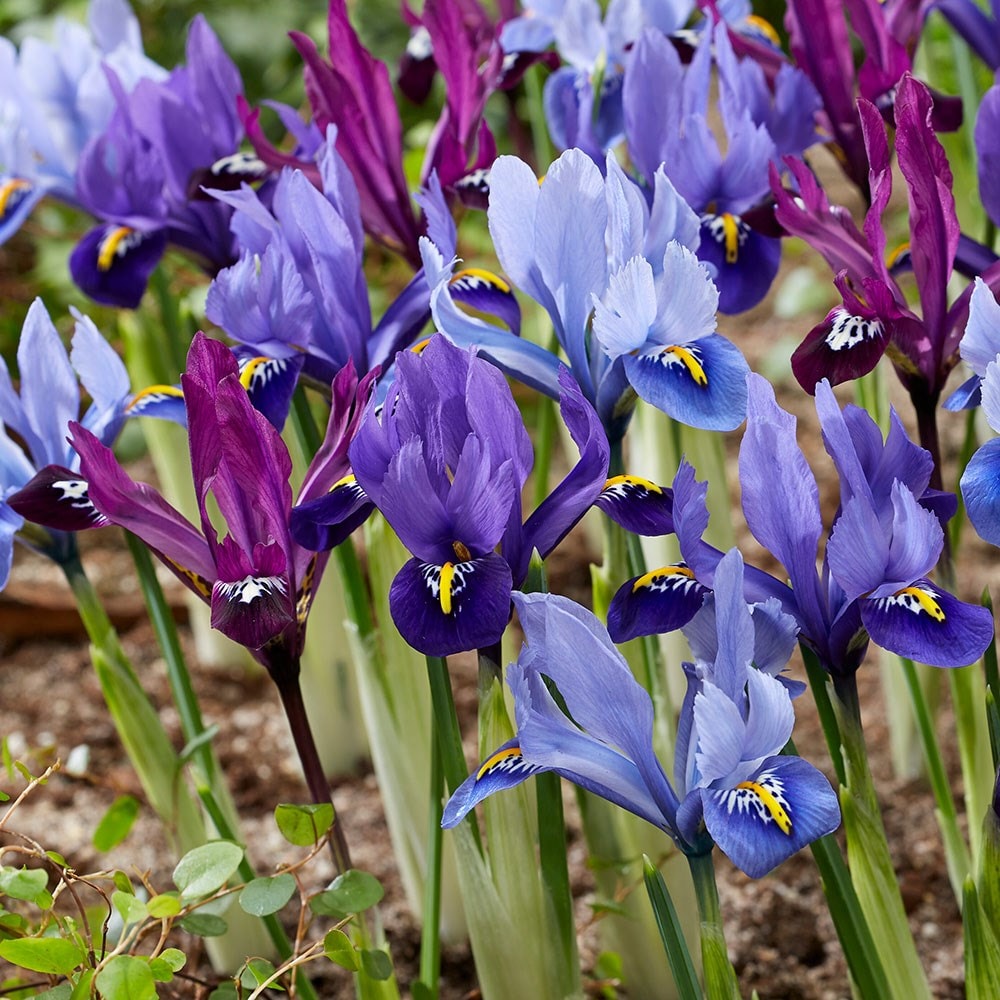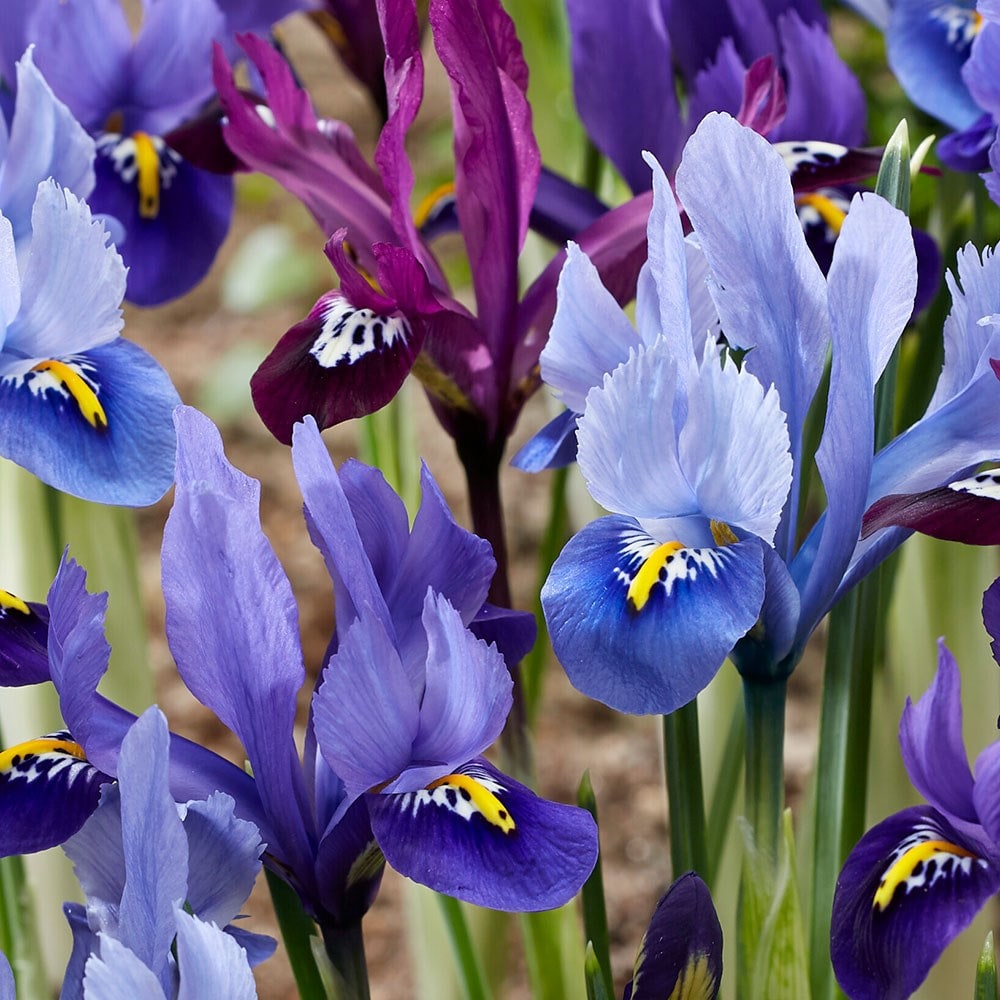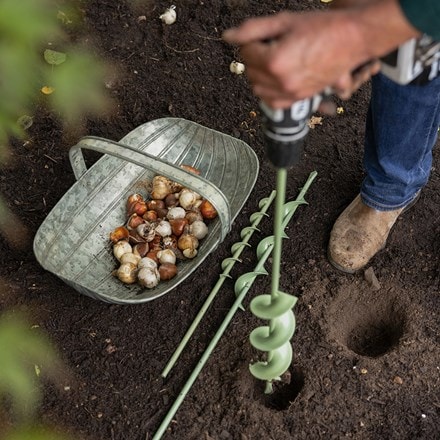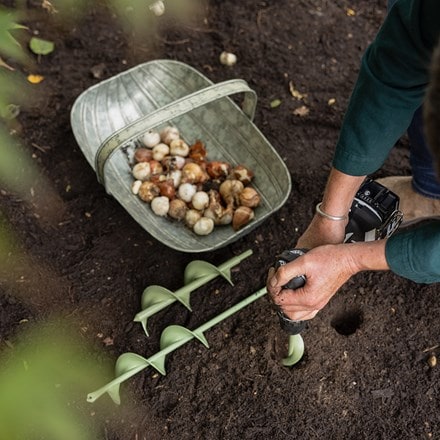Dwarf Iris collection
dwarf iris collection
- 1 × collection | 100 bulbs
- £28.45
- available to order from autumn 2024
- 2 + 1 FREE collections | 300 bulbs
- £56.90
- available to order from autumn 2024
Delivery options
- Bulbs (only) £4.95
- Position: Full sun
- Soil: Moderately fertile, moist, well-drained soil
- Rate of growth: Average
- Flowering period: January to February
- Hardiness: fully hardy
- Bulb size: 5/7
Beguiling, low-growing plants, reticulata iris produce their colourful and lightly scented blooms in late winter and early spring. Outside, they will add early interest at the front of a sunny border, gravel garden or alpine bed, but they also make excellent additions to pots and can even be brought inside for a short time when in flower.
In each collection you will receive the following:
- 25 × Iris 'Harmony' (Reticulata): A gorgeous little thing, with relatively large, royal blue flowers, each with a striped white throat and a bright yellow central band on the falls. The crests also have a slightly feathered edge, which creates a softly ruffled effect. Grows to 15cm.
- 25 × Iris 'Pauline' (Reticulata): Providing a bright splash of colour in late winter and early spring - often when there is little else in bloom, 'Pauline' is a valuable additions to pots, windowboxes, alpine beds and rockeries. Grows to 12cm.
- 25 × Iris 'Alida' (Reticulata): Often quite hard to find, 'Alida' is a striking, mid-blue iris, with sunny splashes of yellow on each fall. They look very sweet when popping up at the front of a sunny border. Grows to 15cm.
- 25 × Iris 'Pixie (Reticulata): A relative newcomer 'Pixie' has smaller than average flowers, but they're exquisite when planted in drifts to form a low swathe of early colour. Grows to 15cm.
- Humans/Pets: Harmful if eaten




